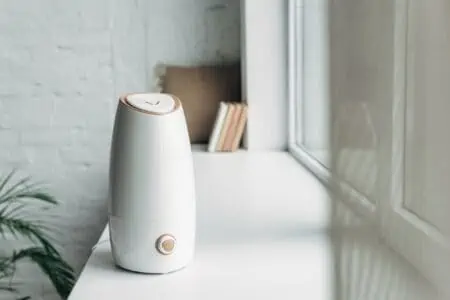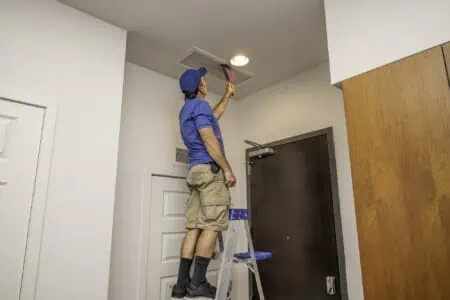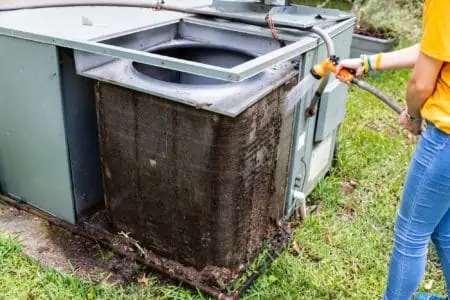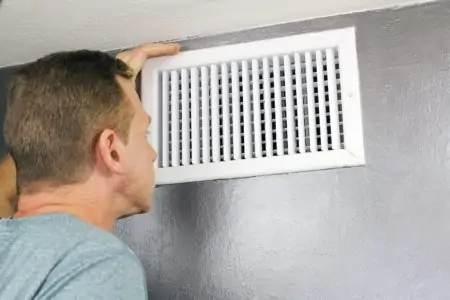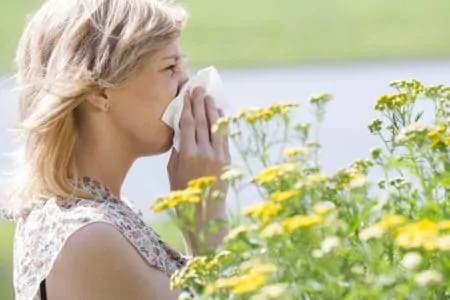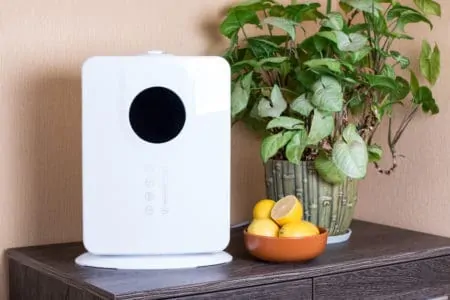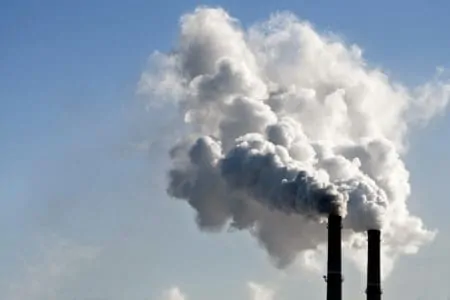Air purifiers are handy for cleaning pollutants, dust, and other contaminants from your home. They can even remove particles that aren’t visible to the naked eye.
But there are some important things you should know about air purifiers. This includes how they work, the various types available, safety warnings, and some information about the industry.
Keep reading to learn 15 key air purifier facts and statistics. They might shock you!
Top 15 Air Purifier Facts and Statistics
- An air purifier pulls in air from your home, and a filter captures microscopic particles before pushing pure air back into your environment.
- There are many different types of air purifiers, including high-efficiency particulate air (HEPA), ultraviolet and ionic.
- A true HEPA filter air purifier is best. It can capture 99.97 percent of microscopic particles.
- The best air purifier brands include Dyson, Rabbit Air, and Levoit.
- An air purifier comes with a Clean Air Delivery Rate (CADR), which suggests how much purification the device provides.
- Air purifiers come with safety locks that prevent kids and pets from changing settings.
- The most dangerous element of an air purifier is the ozone levels. Ionizers can emit harmful ozone, which can trigger illness.
- There are safer ionizers. The best way to gauge this is if it’s CARB-certified.
- The most effective air purifier is one with both a true HEPA filter and activated carbon.
- Don’t expect an air purifier to cure your allergies.
- The global air purifier market size was 12.26 billion in 2021.
- The market is expected to grow by 8.1 percent between 2022 and 2030.
- The driving factors behind the growth include more health awareness, higher pollution levels, and more airborne diseases.
- A HEPA purifier is the most popular type.
- The commercial industry makes up 55 percent of the global air purifier revenue, followed by residential, then industrial.
Facts About Air Purifiers
First, we’ll share basic air purifier information. We’ll talk about what they are, how they work, and the different types. If you’re looking for one for your home, these facts might help your buying journey.
- How does an air purifier work?: An air purifier uses a fan to pull air from your environment. The air goes through a filter that captures dust, mites, allergens, smoke, mold, and other tiny microscopic particles. In turn, it emits pure air back into your home, so you’re breathing healthier air.
- Types of air purifiers: You’ll find ultraviolet, HEPA, and activated carbon air purifiers. Ionic air purifiers are also available, but be careful as these generate ozone. Electronic, central air, and air-to-air exchangers are also available.
- A true HEPA filter is best: When you choose a purifier with a true HEPA filter, you know it will capture 99.97 percent of small particles. These can be down to 0.03 microns in size.
That includes dust, pollen, and pet dander. If you have allergies, then this can dramatically improve them. - The best air purifier brands: When investing in an air purifier, it’s essential to consider its brand name and reputation. Some reputable companies include Dyson, Rabbit Air, Blueair, Honeywell, Levoit, and GermGuardian.
- Consider the CADR rating: The CADR rating — a quality standard — stands for Clean Air Delivery Rate. The higher this rating, the more purification the device provides.
A good CADR rating should be at least 66 percent of the room’s area. For instance, a room that is 150 square feet should qualify for a CADR rating of at least 100.
Air Purifier Safety
Unfortunately, it’s not as easy as buying an air purifier, plugging it in, and turning it on. These systems come with some warnings. We’ll walk you through the five prominent safety warnings to be aware of so that you can use these devices without harm.
- Look for safety locks: If you have children or pets in the home, choose one with a safety lock. This ensures curious fingers — or paws — can’t fiddle with settings.
- Watch out for ozone: The most dangerous element of air purifiers is ozone. Ionizer air purifiers might sound like perfection, but the ozone they emit is dangerous.
Ozone is a layer in the atmosphere that protects us from the sun, but it’s not something you necessarily want in your home. Ozone in the home can trigger respiratory issues due to the corona discharge. This is especially harmful to children, elderly people, and those with asthma. - Choose CARB-certified ionizers: If you need to choose an ionizer, choose one that is CARB-certified. This ensures that it emits safer ozone levels.
- Choose a true HEPA combined with activated carbon: For the most effective and safe results, we recommend choosing a true HEPA filter and an activated carbon filter. This two-stage filter will remove small pollutants, odors, gases, and VOCs. In testing standards, this has shown to be the best type of air purifier.
- Don’t expect it to cure your allergies: While air purifiers are great for those living with allergies, don’t expect them to be a magic cure. If you do have allergies, make sure you’re choosing one with a true HEPA filter rather than HEPA-grade.
HEPA-grade filters are inspired by a true HEPA filter, but they aren’t certified or medical-grade. It won’t trap as many particles as a true HEPA filter. We recommend the Levoit Air Purifier uses an H13 filter, one of the most effective.
Air Purifier Market and Industry
Whether you’re skeptical about air purifiers, there’s no denying that it’s a large and growing industry. Let’s take a closer look at the air purifier industry data.
- The US and global market size: The US air purifier market size was 2.17 billion in 2020. The global air purifier market size was 12.26 billion in 2021.
- The market is growing: The global air purifier market size is expected to grow by 8.1 percent between 2022 and 2030.
- Driving factors: The driving factors for the air purifier market include more airborne diseases, higher pollution levels, and more health awareness. Combining that with more disposable income and higher living standards, the market is growing quickly.
- Most popular types: A HEPA purifier is the most popular type of air purifier. This is followed by activated carbon. Ionic filters are still popular, but other types are slowly overtaking.
- Market segmentation: The commercial portion of the market is responsible for 55 percent of the global revenue. Air purifiers are very common in hospitals, hotels, and other public spaces. After the commercial, the residential portion takes up a large percentage of the market.
Finally, the industrial industry is responsible for the rest. This includes the food and drink industry, printing, chemical, manufacturing, and more. This helps with dust, smoke, and asbestos.
FAQs
Air Purifier — Good or Bad?
With these 15 air cleaner facts and statistics, you might be on the fence about air purifiers. But it’s important to remember that doctors and allergists do recommend them, especially if you have allergies.
Just keep in mind that true HEPA filters are the most effective and the safest. We recommend avoiding Ionizers because the ozone can be harmful to your health. It’s a personal decision which type you opt for, but if you choose an ionizer, we urge you to choose one that is CARB-certified.
With all that being said, air purifiers are becoming more popular and, hopefully, much more effective in time.
